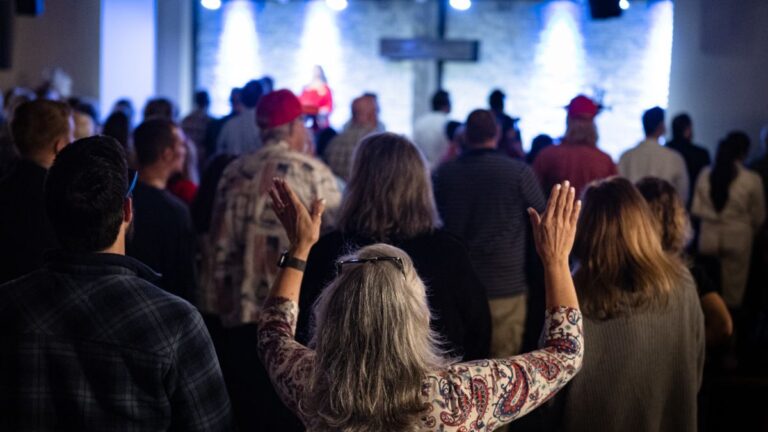Each spring, Lynda Doughty spends nearly all of her time consumed with one task: rescuing sick or injured seal pups stranded along Maine’s beaches and harbors.
Doughty runs Marine Mammals of Maine (MMoME), a nonprofit based in Harpswell that rescues stranded mammals from Kittery to Rockland. It’s the only group in the state licensed to perform short- and long-term rehabilitation for them.

Doughty’s team of three feeds and cares for the pups until they’re ready to go back into the wild or it’s determined that they should be sent to longer-term rehab facilities in Massachusetts or Connecticut.
The April-through-June pupping season is always busy with rescues, Doughty said. But the number of young seals washing ashore has steeply increased since last year. The reason for the uptick remains unclear, but Doughty is working with veterinarians to determine the source of illness and weakness in these animals.
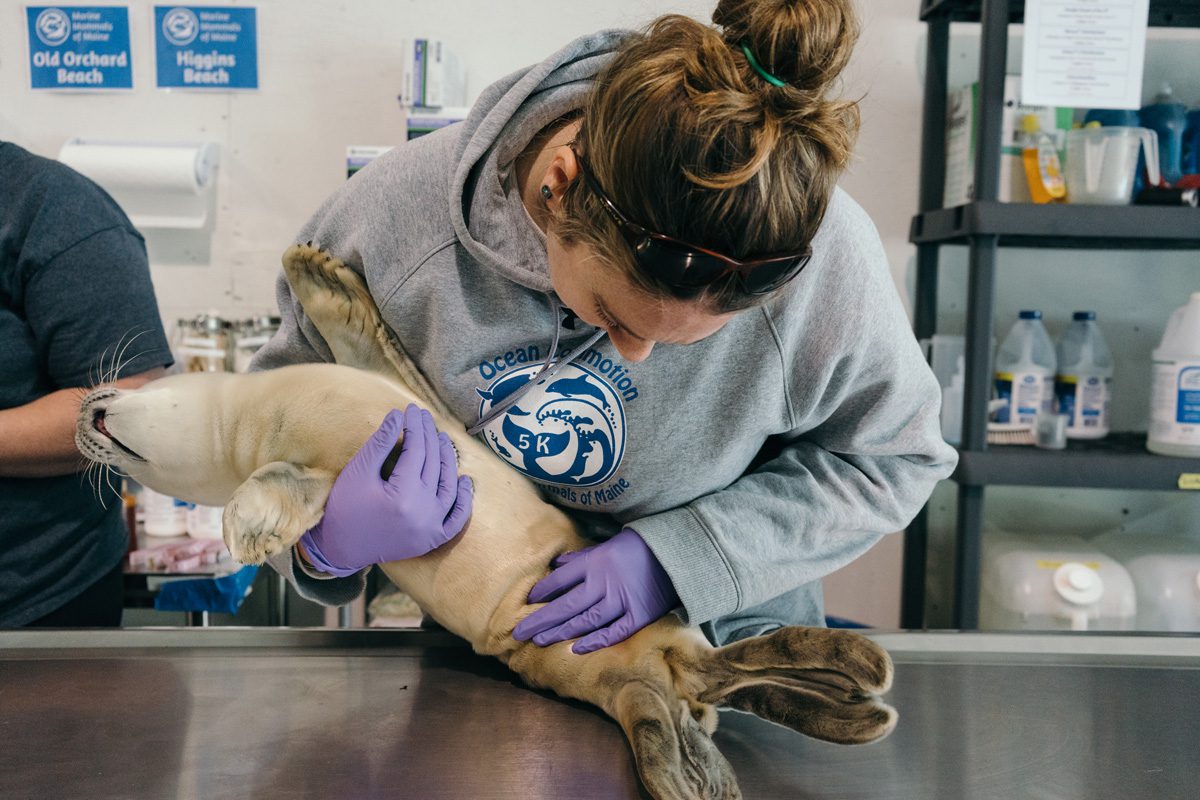
“It’s already been a busier year than last year, and we are only halfway through 2018,” she said, noting that she has cared for 52 animals already, compared to the 31 she responded to by this time last year.
MMoME works closely with Allied Whale, a stranding response group in Bar Harbor that is responsible for incidents from Rockland to Canada. Allied Whale aids animals in the field but doesn’t have the capacity for short- or long-term care. Instead, it sends animals in need of triage or longer-term rehabilitation to MMoME. Together, the two groups help the state uphold the Marine Mammal Protection Act by coordinating emergency response to seals as well as dolphins, porpoises and whales.
But the federal government has proposed draining the National Oceanic and Atmospheric Administration’s funds for these strandings groups, potentially thwarting their ability to help uphold the protection act.
“NOAA can’t be everywhere to deal with marine mammals, but they are mandated by Congress to do so,” said Rosemary Seton, stranding coordinator with Allied Whale. “We do that. We are their eyes and ears and hands on the water on the coast. We are the stewards representing them and doing the job.”
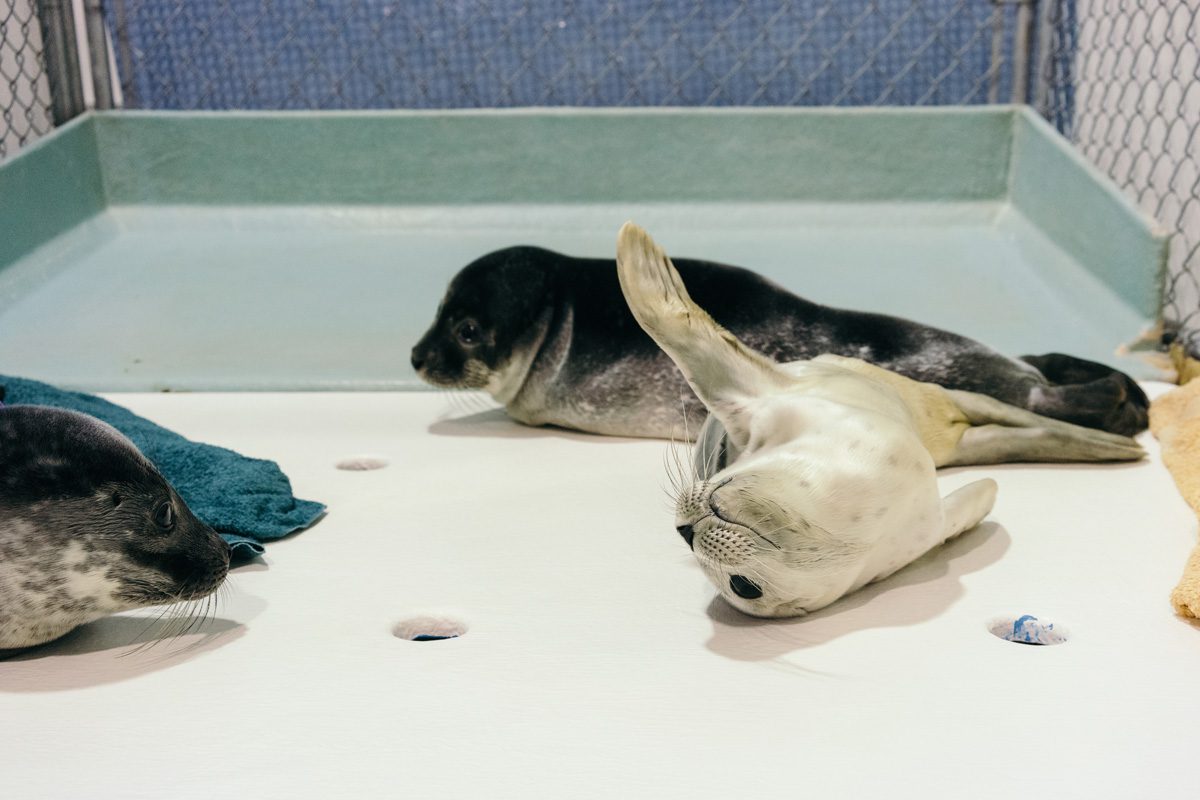
MMoME and Allied Whale function as part of NOAA’s Northeast Marine Mammal Stranding & Disentanglement Network, a group of 14 facilities covering Maine to Virginia that are part of the national Marine Health and Stranding Response Program of about 100 facilities. Beyond responding to stranded animals, network members investigate marine mammal deaths, particularly during so-called Unusual Mortality Events (UMEs), when a spike in deaths calls for immediate response.
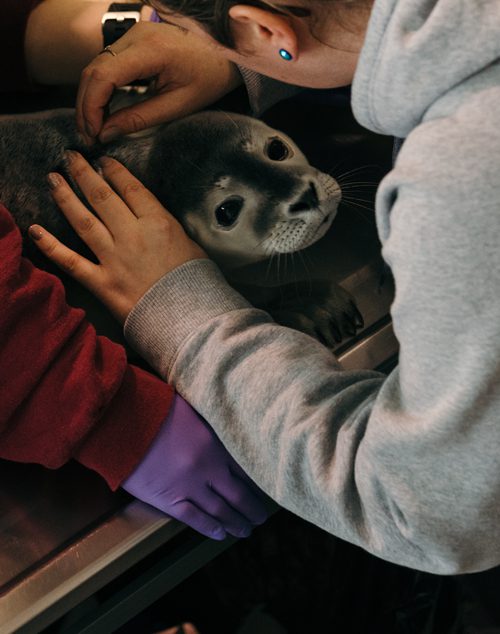
Network members are expected to work collaboratively to tackle necropsies and investigations, sometimes traveling out of state to help colleagues with these tasks. But this year, Doughty has had to turn down calls for help investigating humpback whale deaths in New York because she is too busy managing her seal intakes.
Caring for the animals requires doing regular feedings and health assessments throughout the day and night, and each animal’s condition is different. The work takes place at a converted warehouse, which contains pools that can hold about five animals at any given time, depending on their size, and a large area with towels and dog crates used to transport the animals to and from the facility on a nearly daily basis.
“We do it because we love it, and we do it because we need it,” Doughty said, while finishing up a load of laundry and treating a pup rescued from a boat ramp in Portland this spring.
MMoME has only operated since 2012, but Doughty has been involved in marine mammal operations in Maine for two decades. She founded MMoME when the Maine Department of Marine Resources (where she previously worked) lost funding for its stranding response program in 2011, leaving a gap in coverage. That gap widened in 2014 when the University of New England abruptly shut down its Marine Animal Rehabilitation Center, which had been the state’s primary long-term care facility since 2001.
“We had to euthanize a lot of seal pups that year. It was awful,” said Doughty. “I never want to go through that again.”
But when rehabilitation facilities fill up out of state – as they have this year – they sometimes have no choice but to euthanize seals that cannot survive in the wild. MMoME has already euthanized six animals this year for this reason, Doughty said.
MMoME will learn in August if it’s getting a Prescott Grant from NOAA, which in the past two years has meant roughly $100,000 each for MMoME and Allied Whale. In the meantime, Doughty has already exceeded her budget for animal care this season and will need to rely on private donations. It costs $8,000 to $10,000 to care for each seal, from intake to release.
NOAA has supported marine mammal protection in Maine in other capacities this year. For example, the agency recently awarded the Maine Department of Marine Resources about $700,000 to research ways to reduce deaths of endangered North Atlantic right whales that happen because of entanglement in lobster fishing gear.
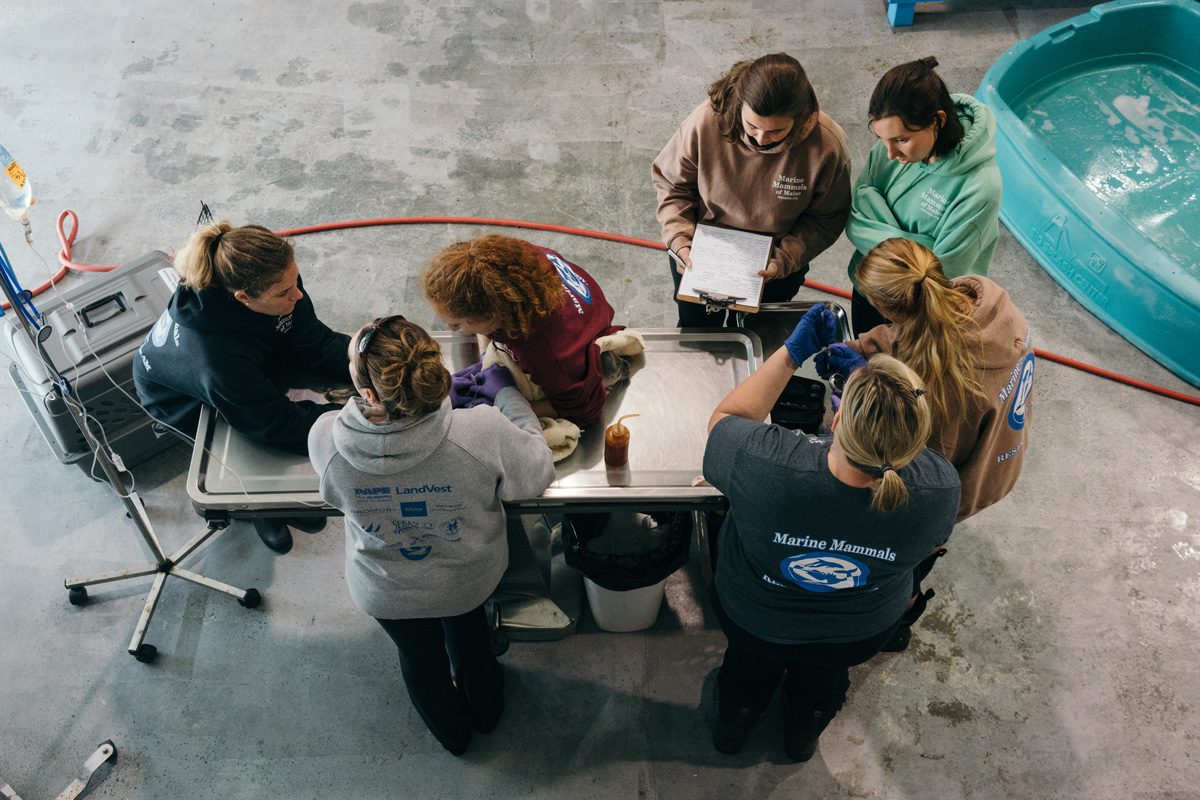
This comes in response to mounting whale deaths in recent years, with a record-breaking 18 North Atlantic right-whale deaths off the coast of Canada and the United States since 2017. An estimated 85 percent of deaths were caused by entanglement with fixed-gear fishing lines, with ship strikes following as the next leading cause of death. Since the lobster industry is the largest that uses this type of gear, the DMR plans to use its grant money to research ways to create safer lobster-fishing methods – specifically, to decrease the strength of lines to allow whales to more easily escape entanglements.
A team within NOAA will convene this fall to determine whether the National Marine Fisheries Office should adjust its management of lobster fisheries to reduce right-whale deaths. But with only 450 to 500 right whales left in the wild – and the alarming fact reported from NOAA that no calves have been observed in the wild this season – some groups argue that the timeline for action must be accelerated.
In February, the Conservation Law Foundation’s Portland office filed a lawsuit against NOAA arguing that the agency must speed up its action to comply with the Endangered Species Act.
“Our ultimate goal here is to protect the whale from extinction and force the federal agency to protect it from extinction in compliance with the Endangered Species Act,” said Emily Green, a CLF attorney. “That is NOAA Fishery’s legal duty.”
CLF and other conservation groups taking legal action against NOAA for the same reason cite research that suggests these whales could become extinct by 2040 if immediate action isn’t taken.
Our ultimate goal here is to protect the whale from extinction and force the federal agency to protect it from extinction in compliance with the Endangered Species Act.”
— Emily Green, attorney for the Conservation Law Foundation in Portland
But Erin Summers, director of the Maine DMR’s Division of Biological Monitoring and leader of the recently funded grant project, said more information is needed before action is taken. She argues that extinction estimates may be true but are based on unpublished data and should be verified more concretely before informing management plans. Information her team gathers this summer will help determine the future of lobster-fishery management in support of right-whale health.
“We are trying to inform that conversation so that we are not talking in circles,” said Summers, adding that NOAA has been adjusting lobster-fishing management for 20 years to help improve safety for whales. These adjustments have included limiting the amount of rope used in the water and creating more stringent shipping lane restrictions where right whales congregate.
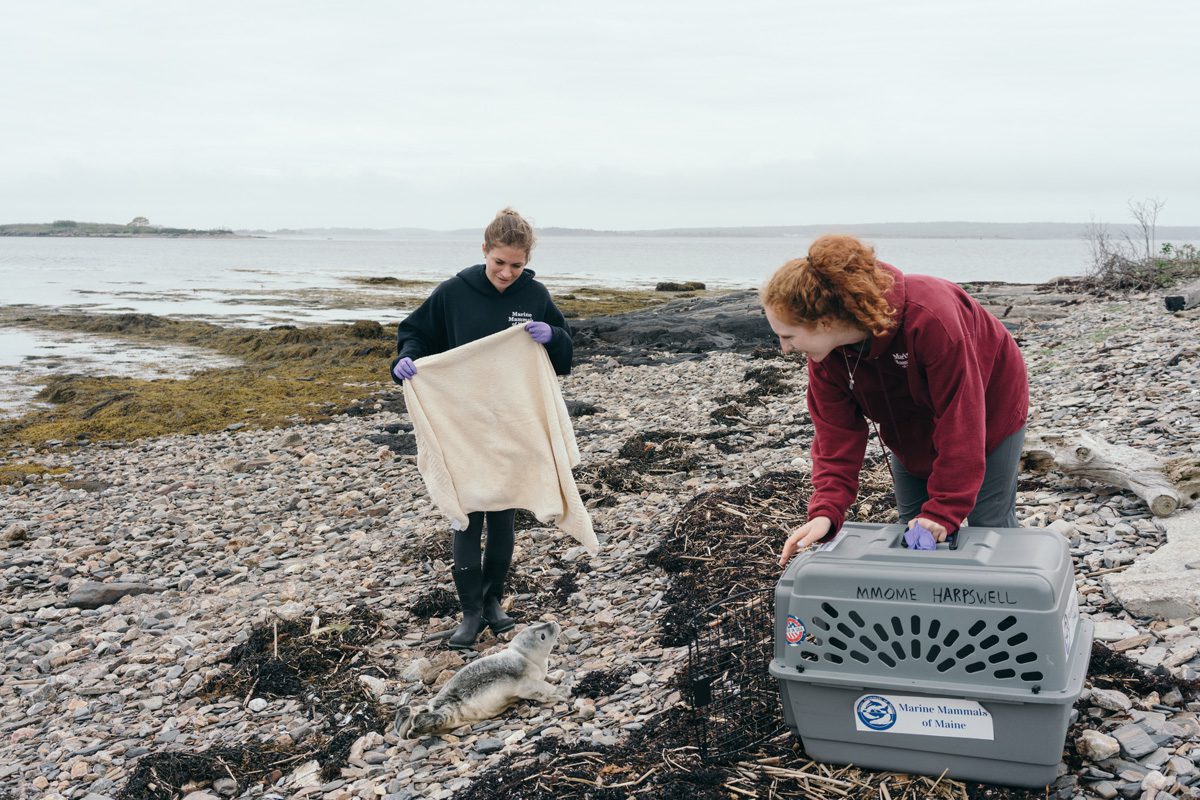
“We have taken approximately 30,000 miles of line out of the water column over the years and we have also closed seasonally about 32,000 square nautical miles of fishing territory,” said David Gouveia, protected species monitoring program branch chief with NOAA Fisheries Greater Atlantic Region, during a news conference last August when NOAA declared the North Atlantic right whale Unusual Mortality Event.
Still, the mounting tasks of investigating increased whale deaths through necropsies and other time- and resource-intensive procedures fall hard on stranding network members like MMoME and Allied Whale. And while the declaration of UMEs frees up some NOAA funds for such investigations, that’s not always enough to cover the costs of getting to and executing the assessments in the field.
“There may be cases where that might not be put in our budget,” said Garron with NOAA. “We may call [stranding coordinators] and ask if they are available and interested where funding might not be available.”
Whether NOAA is legally required to fund these programs in support of the Endangered Species Act and Marine Mammals Protection Act is unclear, according to Green with the Conservation Law Foundation. “The federal government requires states to comply with all sorts of things without expressly funding them to do those things,” she said.
Either way, the federal government’s inconsistent support challenges the stranding networks. “It definitely makes our jobs very difficult,” said Garron.
And then there are people who argue that seals, in particular, don’t deserve the resources they’re receiving from stranding networks because they aren’t endangered. But Seton with Allied Whale points out that monitoring these animals not only upholds acts of Congress, it also sheds light on overall ocean health.
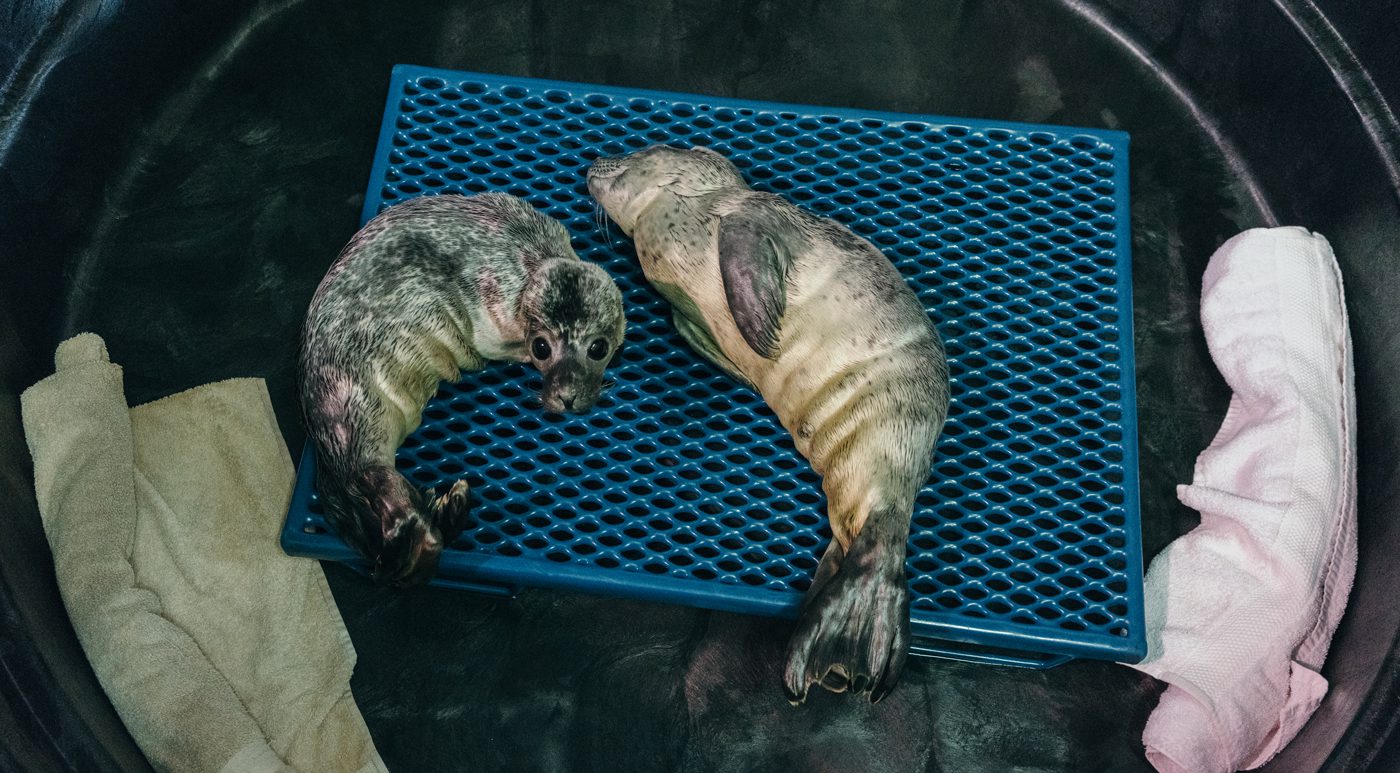
“They really can be a way to keep tabs on not only the population of marine mammals but also the food that they eat,” said Seton, explaining that humans eat some of the same fish that seals eat. “So it may trickle right down to human health in the end, and we are on the front lines to recognize if something is amiss.”
Despite uncertainties in funding for the coming year, Doughty is determined to keep MMoME afloat as the sole marine mammal rehabilitation center in Maine.
“You look at the groups that have closed down just because they couldn’t support doing this, and I don’t want us to be one of those groups,” said Doughty. “The consistency is very important.”
What keeps her going through the long days of work is the support of other network members in the region and knowing that she’s making a difference in the lives of animals.
“It’s not about saving every animal, it’s about helping out the ones that need it,” she explained. “It’s us doing our part to uphold protection for this wildlife.”






